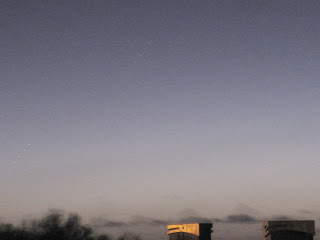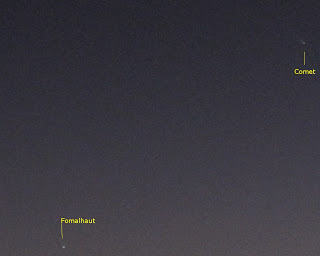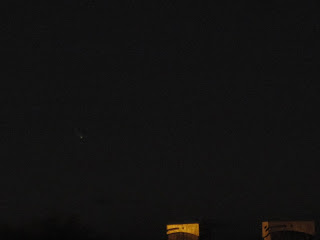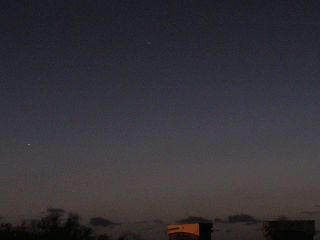

| Visitors Now: | |
| Total Visits: | |
| Total Stories: |

| Story Views | |
| Now: | |
| Last Hour: | |
| Last 24 Hours: | |
| Total: | |
Comet 2011 L4 PanSTARRS tonight (28 February, 2013)
After days of cloud I finally had a nother chance to see comet C/2011 L4 PanSTARRS. The sky was clear and I headed down the beach at 20:30 ACST. Using Fomalhaut as my reference (just visible low above the horizon in the twilight glow) I swept my binoculars to the right and up and almost immediately saw the pale comet in the twilight. It was much clearer than my first glimpse.
The comet had a nice, star like head and a short but clear fan shaped tail.
I started shooting images with the camera around 20:45 ACDST, starting with a 4 second exposure, and increasing as the twilight deepened. Around 21:00 I could just see the comet with the unaided eye as a faint star, no tail (before I could just detect it with averted vision). In binoculars the tail looked to be roughly 1 degree long. It was hard to be accurate with the relatively bright sky.
I couldn’t estimate the brightness of the comet more than roughly, there were no decent nearby stars for comparison, all I can say was it seemed to be brighter than Magnitude 4 (and was brighter than the nearest star, which was magnitude 4.4). I’d hazard the prospects for it being at least magnitude 2 and reasonably visible to the unaided eye by March 5 are very good.
The comet was visible all the way to the horizon, although by around 21:15 it was visibly dimming in the horizon murk.
2013-02-28 06:31:52
Source: http://astroblogger.blogspot.com/2013/02/comet-2011-l4-panstarrs-tonight-28.html
Source:






